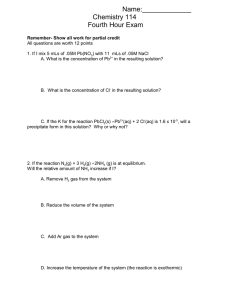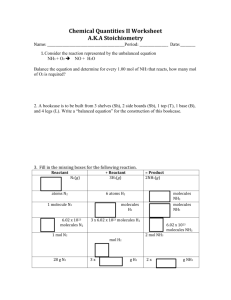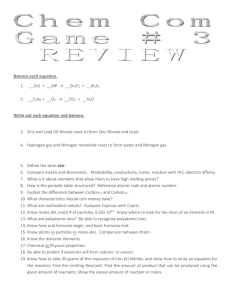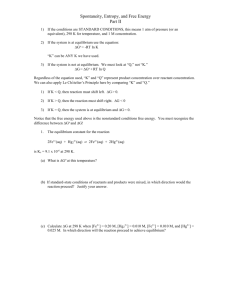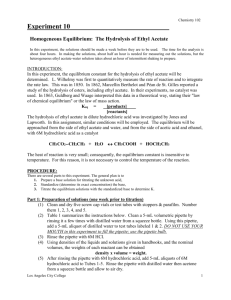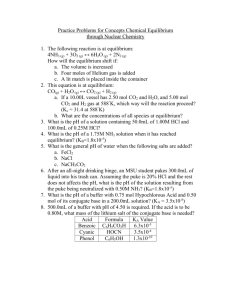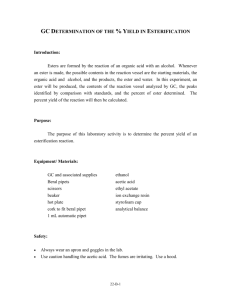Quiz5answer - Bryn Mawr College
advertisement
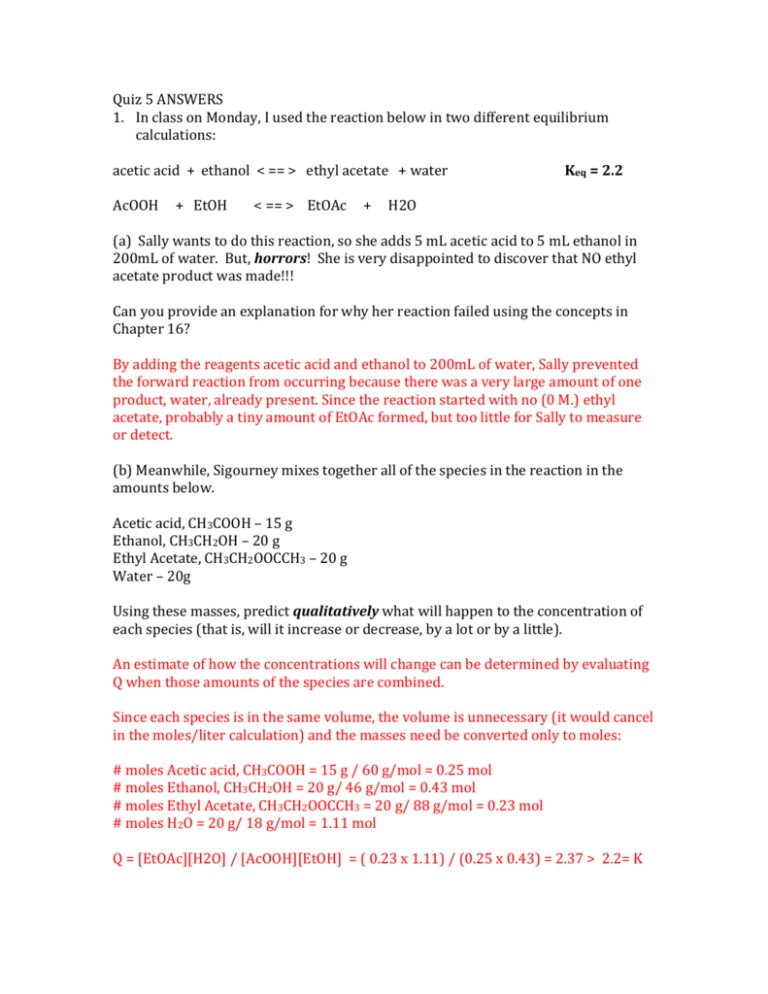
Quiz 5 ANSWERS 1. In class on Monday, I used the reaction below in two different equilibrium calculations: acetic acid + ethanol < == > ethyl acetate + water AcOOH + EtOH < == > EtOAc + Keq = 2.2 H2O (a) Sally wants to do this reaction, so she adds 5 mL acetic acid to 5 mL ethanol in 200mL of water. But, horrors! She is very disappointed to discover that NO ethyl acetate product was made!!! Can you provide an explanation for why her reaction failed using the concepts in Chapter 16? By adding the reagents acetic acid and ethanol to 200mL of water, Sally prevented the forward reaction from occurring because there was a very large amount of one product, water, already present. Since the reaction started with no (0 M.) ethyl acetate, probably a tiny amount of EtOAc formed, but too little for Sally to measure or detect. (b) Meanwhile, Sigourney mixes together all of the species in the reaction in the amounts below. Acetic acid, CH3COOH – 15 g Ethanol, CH3CH2OH – 20 g Ethyl Acetate, CH3CH2OOCCH3 – 20 g Water – 20g Using these masses, predict qualitatively what will happen to the concentration of each species (that is, will it increase or decrease, by a lot or by a little). An estimate of how the concentrations will change can be determined by evaluating Q when those amounts of the species are combined. Since each species is in the same volume, the volume is unnecessary (it would cancel in the moles/liter calculation) and the masses need be converted only to moles: # moles Acetic acid, CH3COOH = 15 g / 60 g/mol = 0.25 mol # moles Ethanol, CH3CH2OH = 20 g/ 46 g/mol = 0.43 mol # moles Ethyl Acetate, CH3CH2OOCCH3 = 20 g/ 88 g/mol = 0.23 mol # moles H2O = 20 g/ 18 g/mol = 1.11 mol Q = [EtOAc][H2O] / [AcOOH][EtOH] = ( 0.23 x 1.11) / (0.25 x 0.43) = 2.37 > 2.2= K Q>K so there is too much product and the reaction equilibrium will shift to the left, back to reagents. So [AcOOH] and [EtOH] will increase slightly and the [EtOAc] and [H2O] will decrease. 2. (This is one of the examples I was going to do Monday: let’s see if you can do it!!) If you open a bottle of ammonium chloride, you will see a white solid and you will smell a strong—almost painful!—odor of ammonia. This is because ammonium chloride spontaneously decomposes to make two gases: ammonia and hydrochloric acid. The equilibrium constant Kc for the decomposition reaction (below) is 8.0 x 10-3. NH4Cl (s) < == > NH3 (g) + HCl (g) If you put 100 g ammonium chloride in a bottle, what are the final equilibrium concentrations of the two gases? [No, you don’t need the volume of the bottle!! Why not???!!!) write the equilibrium expression: Kc = [NH3][HCl] *** solid NH4Cl does not appear in expression!! By the stoichiometry of reaction, at equilibrium [NH3] = [HCl], So assign [NH3] = [HCl] =x. Then Kc = [NH3][HCl] = x2 = 8.0 x 10-3 And taking the square root: x = 0.089 [NH3] = [HCl] = 0.089 M Note that, since solid doesn’t show up in equilibrium expression, it doesn’t matter how much solid is put into what size bottle. At equilbrium, [NH3] = [HCl] = 0.089 M.


